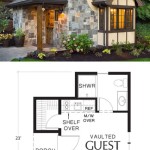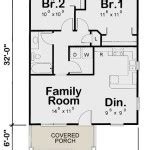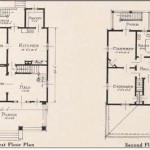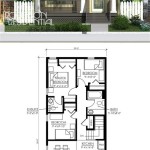Plans To Build A Tiny House: Comprehensive Guidelines in Indiana State
Embarking on the construction of a tiny house is a significant undertaking, requiring meticulous planning and adherence to relevant regulations. In Indiana, this process involves navigating state and local ordinances, understanding zoning requirements, and ensuring the structure meets safety and habitability standards. This article provides comprehensive guidelines for individuals considering building a tiny house in Indiana, outlining essential steps and considerations.
The first step involves defining the intended use of the tiny house. Will it be a primary residence, a secondary dwelling (accessory dwelling unit or ADU), or a recreational structure? This designation significantly impacts the applicable regulations and permitting processes. A permanent residence necessitates compliance with full residential building codes, while an ADU may have specific size and location restrictions. Recreational structures may be subject to differing setback requirements and inspections.
It is crucial to understand Indiana's legal definition of a "tiny house." While a universally accepted definition remains elusive, Indiana generally considers a tiny house to be a dwelling unit significantly smaller than a traditional home, often under 600 square feet. This size is often the threshold that triggers different code requirements. Structures exceeding this size will likely be treated as standard residential buildings and subject to more stringent regulations.
Prospective builders should also differentiate between "tiny houses on wheels" (THOWs) and "tiny houses on foundations." THOWs, due to their mobility, are often classified as recreational vehicles (RVs) and are subject to different regulations than permanently affixed structures. Understanding this distinction is paramount in determining the appropriate building codes and permitting pathways.
Zoning Regulations and Local Ordinances
Zoning regulations are the cornerstone of land use control and dictate what types of structures are permitted in specific areas. These regulations are established and enforced at the local (county and city) level in Indiana. Therefore, the first and most crucial step is to contact the local planning and zoning department to determine the specific regulations governing tiny houses in the intended location.
Zoning ordinances often address various aspects of building construction, including minimum square footage requirements, setback distances from property lines, height restrictions, and parking regulations. In many Indiana jurisdictions, minimum square footage requirements for single-family dwellings may exceed the typical size of a tiny house. This discrepancy can present a significant obstacle, requiring either a variance (an exception to the rule) or careful site selection within a zoning district that allows smaller dwellings.
Furthermore, zoning ordinances may restrict the placement of ADUs, specifying allowable locations (e.g., within accessory buildings or as detached dwellings), maximum size limitations, and occupancy restrictions. These regulations are designed to maintain neighborhood character and prevent overcrowding. Thorough research of local zoning ordinances is therefore essential to avoid potential legal issues and costly modifications later in the construction process.
It is also important to inquire about specific regulations pertaining to THOWs. Some jurisdictions may prohibit the use of THOWs as permanent residences, while others may allow them in designated RV parks or campgrounds. Even in areas where THOWs are permitted, there may be restrictions on the length of stay, utility hookups, and waste disposal methods. Understanding these nuances is critical for ensuring compliance.
The process of obtaining a zoning permit typically involves submitting detailed site plans, architectural drawings, and other supporting documentation to the local planning department. These documents must demonstrate compliance with all applicable zoning regulations and building codes. Failure to comply with these regulations can result in fines, stop-work orders, and even the demolition of the illegally constructed structure.
Building Codes and Safety Standards
Building codes are sets of technical standards that regulate the design, construction, and maintenance of buildings to ensure public health, safety, and welfare. In Indiana, the statewide building code is based on the International Building Code (IBC), International Residential Code (IRC), and other related codes, as adopted and amended by the Indiana Fire Prevention and Building Safety Commission.
The applicability of specific building codes to tiny houses depends on their classification. Tiny houses on foundations are typically subject to the IRC, which governs the construction of one- and two-family dwellings. THOWs, if classified as RVs, are typically subject to ANSI A119.2 or RVIA standards. However, it is crucial to verify with the local building department which codes are enforced in their jurisdiction.
The IRC contains detailed provisions for structural integrity, fire safety, plumbing, electrical systems, and mechanical systems. These provisions are designed to ensure that buildings are safe for occupancy and protect the health and safety of residents. Tiny houses must comply with all applicable provisions of the IRC, unless specifically exempted by local ordinance or code variance.
Key aspects of building code compliance for tiny houses include: foundation requirements, framing specifications, insulation requirements, window and door specifications, plumbing fixtures and drainage systems, electrical wiring and grounding, and fire safety measures (e.g., smoke detectors and fire extinguishers). Each of these elements must be designed and constructed in accordance with the applicable code provisions.
Obtaining a building permit typically involves submitting detailed construction plans, including architectural drawings, structural calculations, and specifications for all building materials and systems. The plans are reviewed by the local building inspector to ensure compliance with the applicable building codes. Once the plans are approved, a building permit is issued, allowing construction to proceed.
Throughout the construction process, periodic inspections are conducted by the local building inspector to verify that the work is being performed in accordance with the approved plans and building codes. These inspections typically cover various stages of construction, including foundation, framing, plumbing, electrical, and mechanical systems. Failure to pass these inspections can result in delays and costly rework.
Utility Connections and Infrastructure
Connecting a tiny house to essential utilities, such as water, sewer, and electricity, is a critical aspect of the construction process. The requirements for utility connections vary depending on the location and the type of dwelling (e.g., tiny house on foundation vs. THOW).
For tiny houses on foundations, connection to municipal water and sewer systems is typically required, if available. If municipal services are not available, a private well and septic system may be permitted, subject to approval by the local health department. Septic systems must be designed and installed in accordance with state regulations and local ordinances.
THOWs, due to their mobility, may rely on alternative utility solutions, such as water tanks, composting toilets, and greywater systems. However, the legality of these systems varies depending on local regulations. Some jurisdictions may prohibit the use of composting toilets or greywater systems, while others may allow them subject to certain conditions.
Electrical service for tiny houses is typically provided through connection to the local power grid. This requires obtaining an electrical permit and complying with the National Electrical Code (NEC), as adopted by Indiana. Electrical wiring must be performed by a licensed electrician to ensure safety and compliance.
Alternative energy sources, such as solar panels and wind turbines, can also be used to provide electricity for tiny houses. However, these systems must be installed and maintained in accordance with all applicable codes and regulations. Connection to the power grid may still be required for backup power.
Proper waste disposal is a critical consideration for tiny houses. For homes connected to municipal sewer systems, standard plumbing fixtures and drainage systems are required. For homes using septic systems, the system must be sized appropriately for the anticipated wastewater load. For THOWs using composting toilets, proper handling and disposal of composted waste is essential to prevent environmental contamination.
In conclusion, building a tiny house in Indiana requires thorough planning, diligent research, and strict adherence to applicable regulations. By understanding zoning ordinances, building codes, and utility requirements, prospective builders can navigate the permitting process successfully and create a safe, sustainable, and legally compliant tiny home.

12 X 20 Tiny Home Designs Floorplans Costs And More The Life

12 X 20 Tiny Home Designs Floorplans Costs And More The Life

14 Amazing Tiny Homes Pictures Inside Out

Tiny House Laws In Pennsylvania A Complete Guide

14 Amazing Tiny Homes Pictures Inside Out

Tiny Home Regrets Is Downsizing Worth The Cost Money

Tiny Home Regulations In Georgia The Complete Guide

14 Amazing Tiny Homes Pictures Inside Out

Affordable Tiny Home Kits For Prefab House

Tiny Home Regulations In California The Complete Guide Zook Cabins
Related Posts








